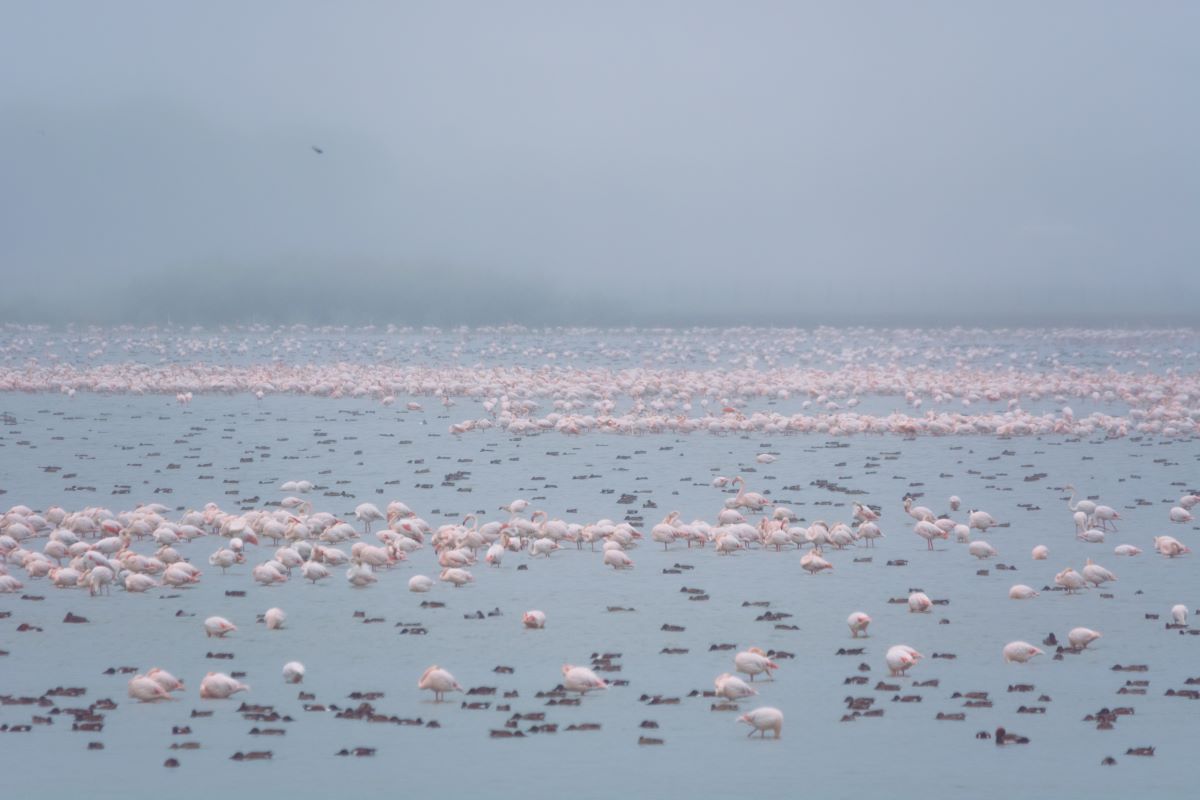The poor condition of Doñana has a negative impact on waterfowl across the continent

Wintering waterfowl in Doñana. // Miguel de Felipe
The Doñana marsh has undergone significant changes over the past 40 years due to human activities and climate change. These changes have impacted the waterfowl communities that winter there, as well as goose and duck populations across the Western Palearctic, an ecological region encompassing Europe, North Africa and parts of Western Asia. These are the results of a new study published in the journal Global Change Biology by a scientific team from the Doñana Biological Station – CSIC.
“Our results show that the conservation of Doñana is not just a regional or national issue. When Doñana is in poor state, the consequences ripple across Europe”, explains Miguel de Felipe, lead author of the study. The research combines 38 years of local and international census, environmental data and functional analyses to assess how local-scale environmental changes affect biogeographical population of Anatidae species.
40 years of generalised negative trends in Doñana
Based on data from aerial and terrestrial census conducted by ICTS Doñana, the research reveals that 9 of the 15 species analysed have declined over the last 40 years associated with the loss of flooded areas in the marshes of Doñana National Park. This transformation has significantly altered the wintering bird community. In the 1980s, species such as the Greylag goose (Anser anser), the Eurasian widgeon (Mareca penelope) and the Eurasian teal (Anas crecca), which are closely linked to a good level of flooding and high plant productivity in the marsh, predominated. Today, the most abundant species are the northern shoveler (Spatula clypeata) and the northern pintail (Anas acuta). This shift is mainly due to rising temperatures and reduced autumn rains in North Africa, which have led to more of these birds to winter in Doñana each year, although they still depend on the condition of the natural marshland.
A problem that trascends borders
But the effects of the deterioration of Doñana extend beyond the boundaries of the protected area. Its signficance as an international wintering site is such that a large percentage of the duck populations of the from across the continent spend the winter months there. There is no other wetland capable of accommodating and sustaining hundreds of thousands of birds. To study its impact on international waterbird populations, the team used data from the International Waterbird Census, a global monitoring programme that annually collects information on waterfwowl in different European wetlands. This data was complemented with historical bird observations from the ringing offices of the Aranzadi Science Society, ICTS Doñana and SEO/Bird Life, along with satellite images and meteorological data from 432 internationally important wetlands along the East Atlantic flyway between Europe and Africa.
The results showed that the state of Doñana was one of the factors determining how migratory waterfowl populations fluctuated from year to year. Just as a heatwave during the breeding season in central Europe directly affects the number of chicks that will survive that year, the conditions these birds encounter in winter in Doñana affect their future survival or breeding success
“When Doñana is in poor condition, birds wintering here return to their breeding grounds in Europe weakened, a situation that leads to a decline in population due to lower breeding success and higher mortality rates the following spring”, explains Miguel de Felipe.
Implications for management and conservation
The results also emphasize that human-managed ecosystems, such as rice fields, fish farms or salt marshes -often artificially flooded-, fail to offset the effects the degradation of Doñana's natural marshes on waterfowl.
‘The situation is urgent. Fortunately, we have not yet had to regret the local extinction of any of the species studied. However, the study shows that the conservation status of Doñana is crucial not only for resident species, but also for the preservation of waterfowl breeding in regions as far away as Denmark or Sweden,’ says Miguel de Felipe.
Referencia
Miguel de Felipe, Juan A. Amat, José Luis Arroyo, Rubén Rodríguez, Carmen Díaz-Paniagua. "Habitat changes at the local scale have major impacts on waterfowl populations across a migratory flyway". Global Change Biology. DOI: 10.1111/gcb.17600